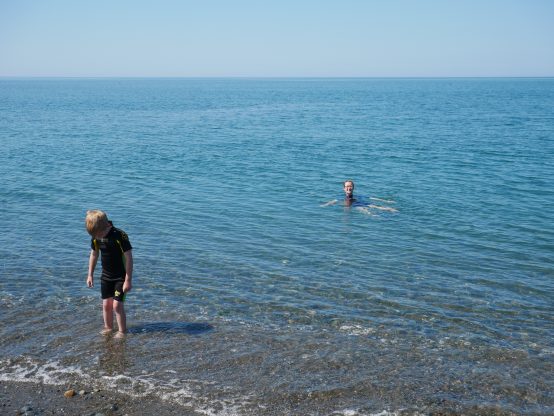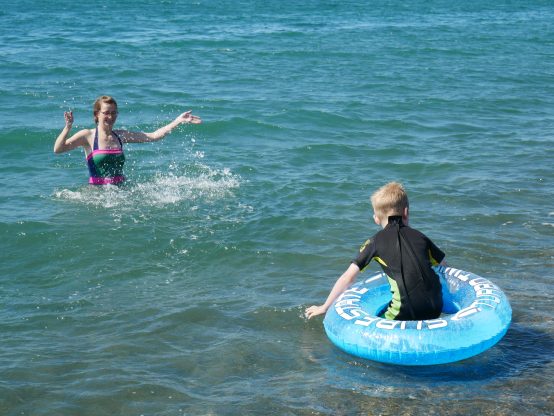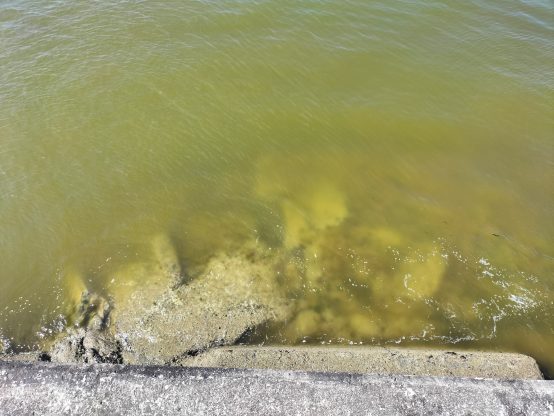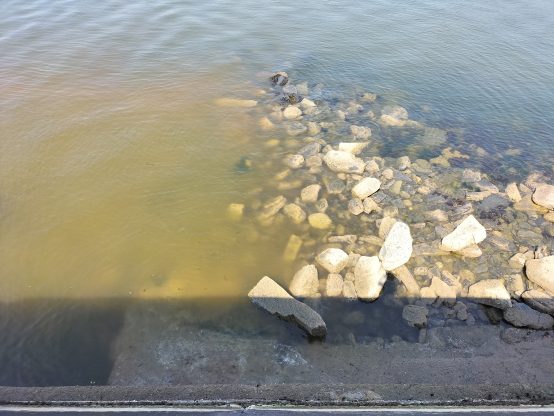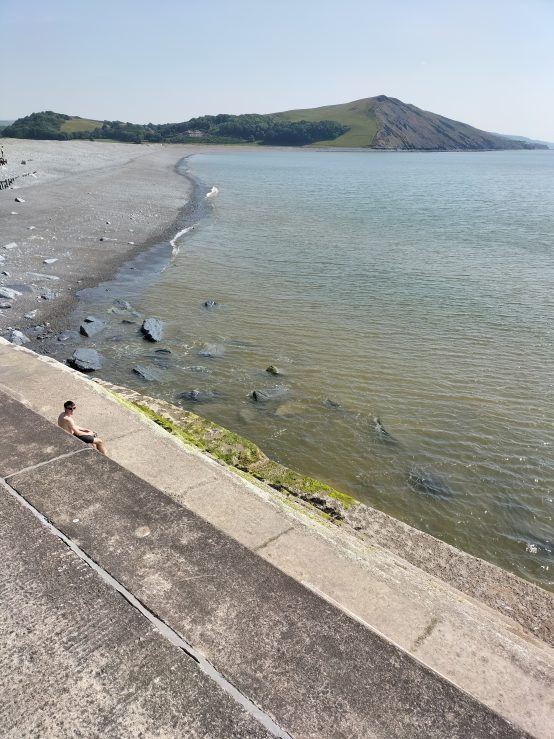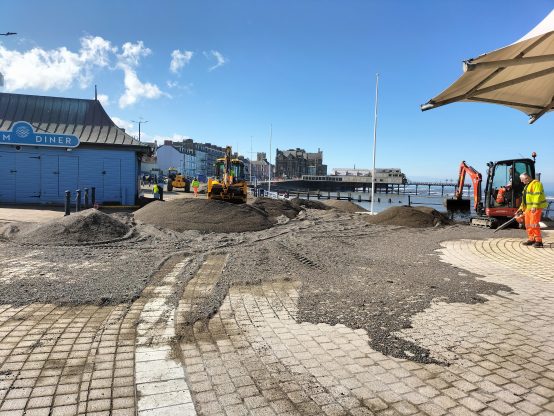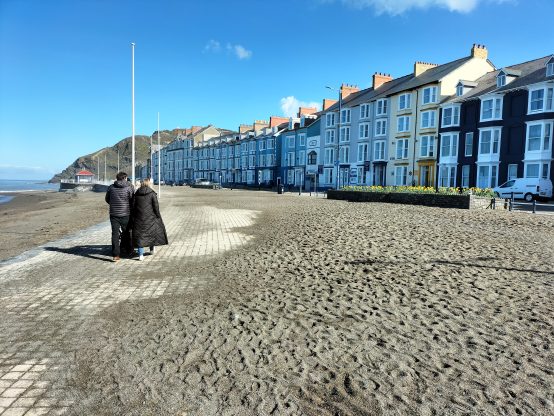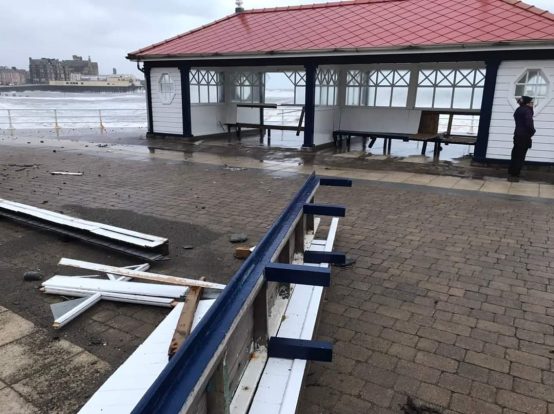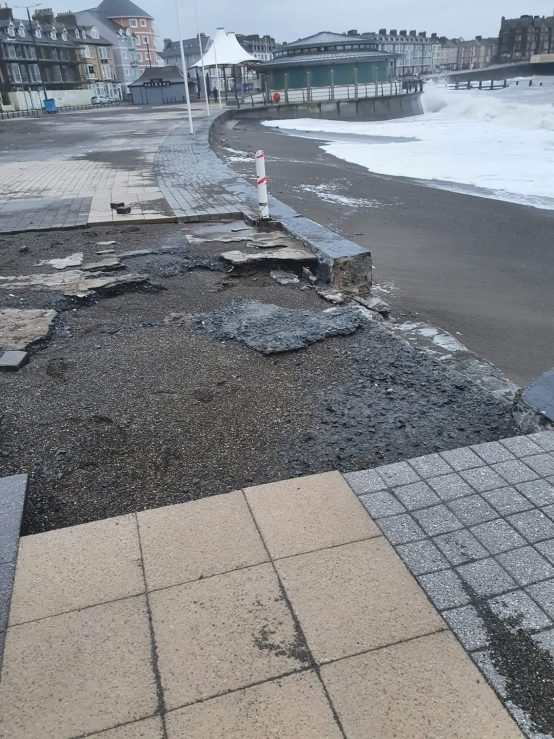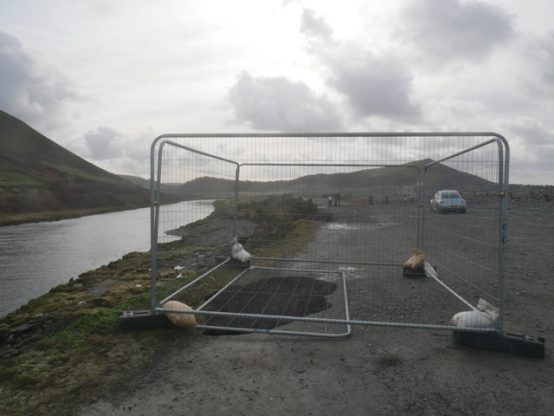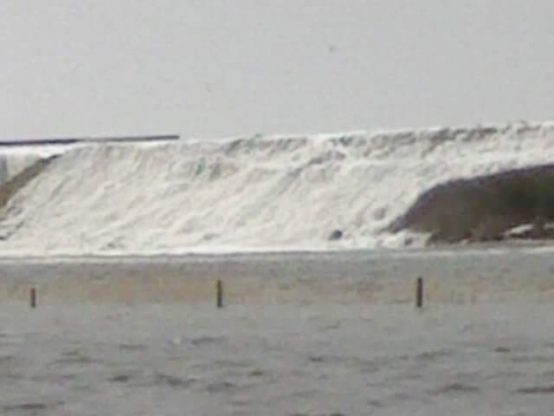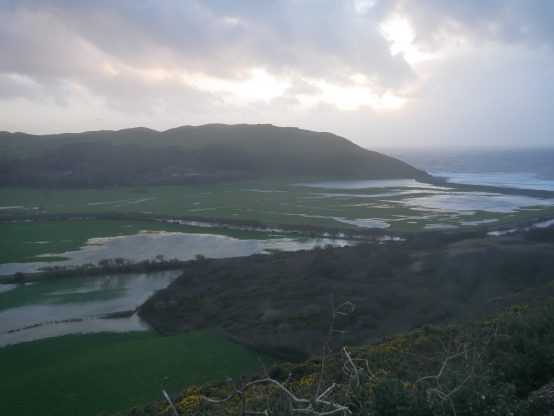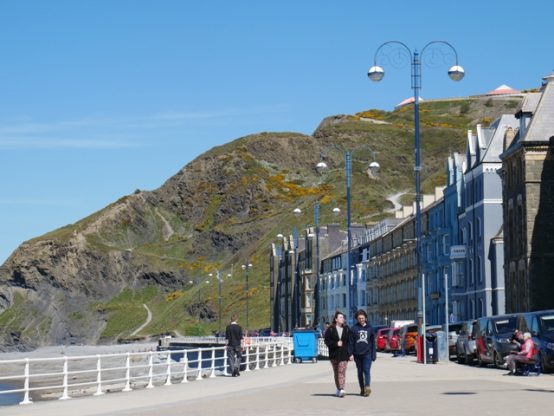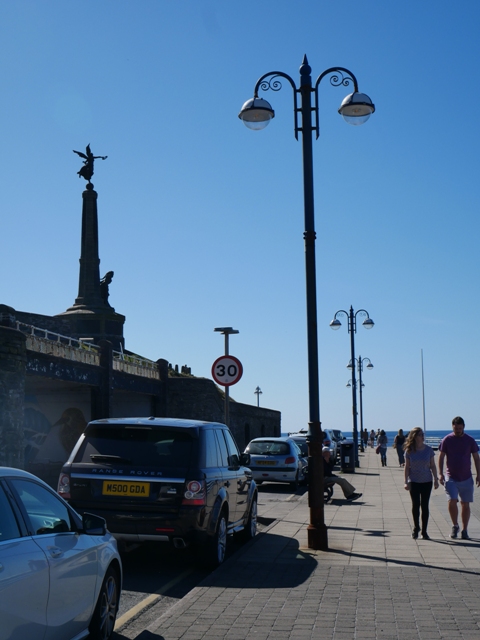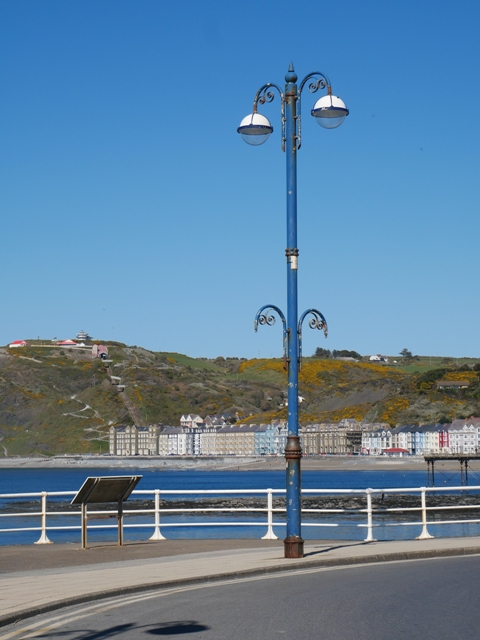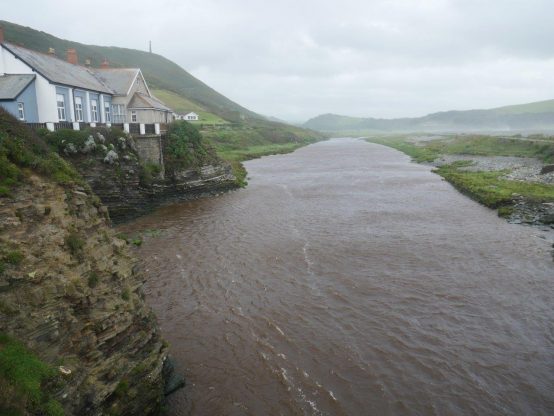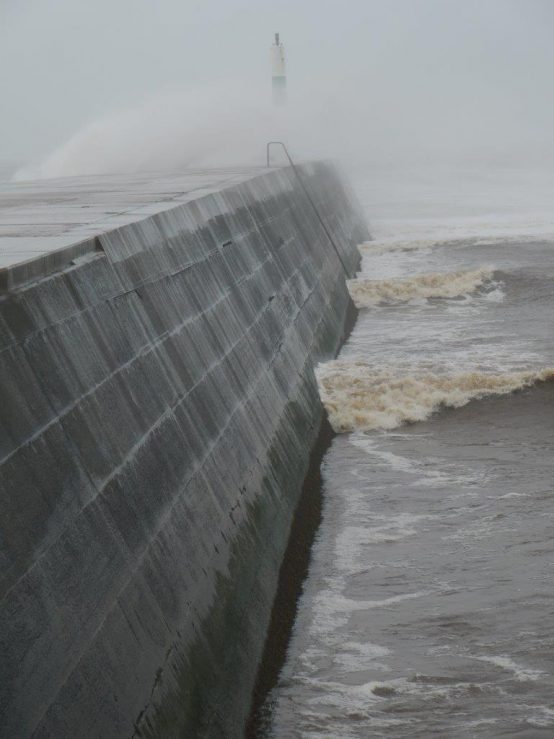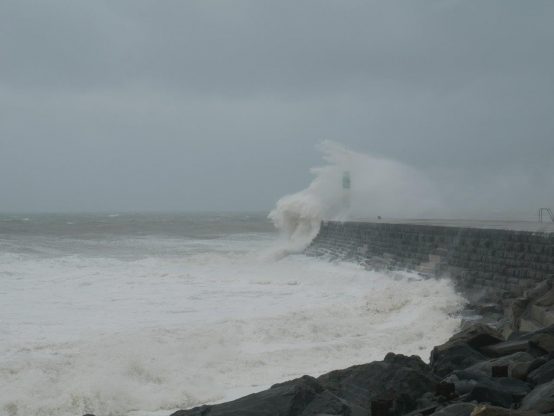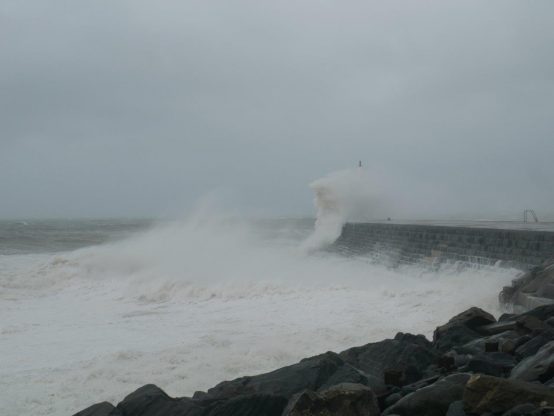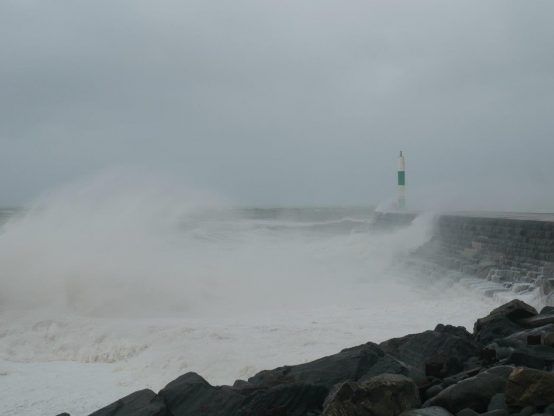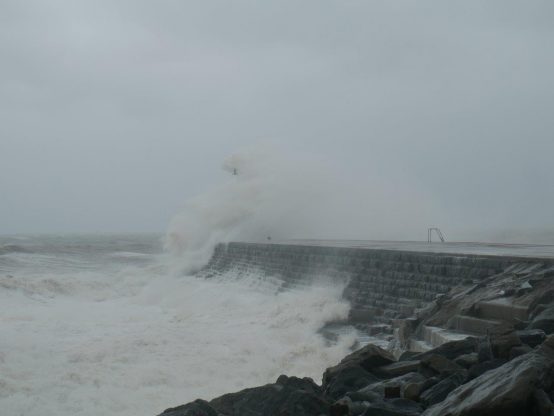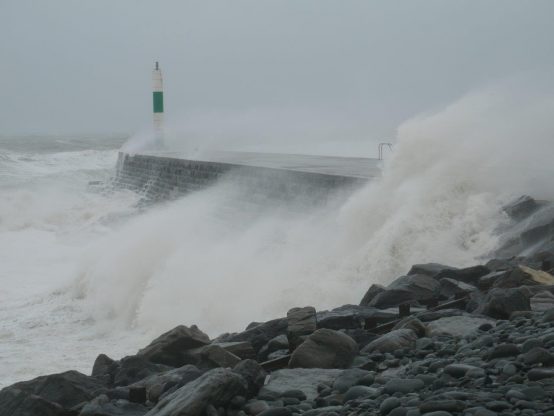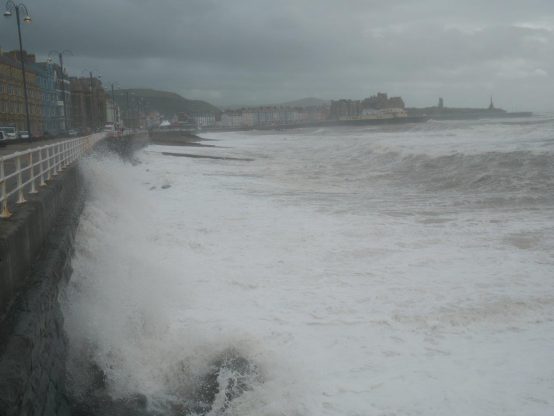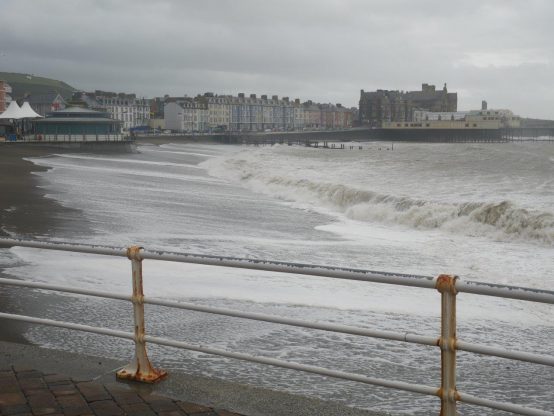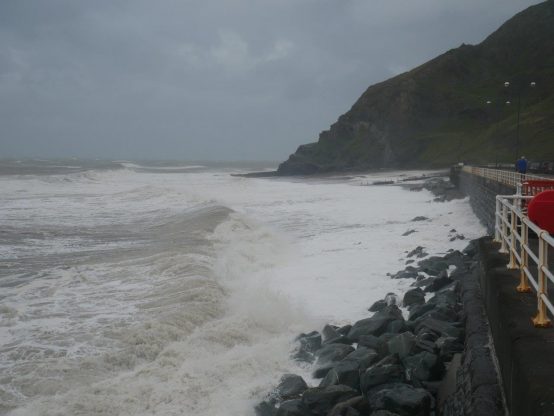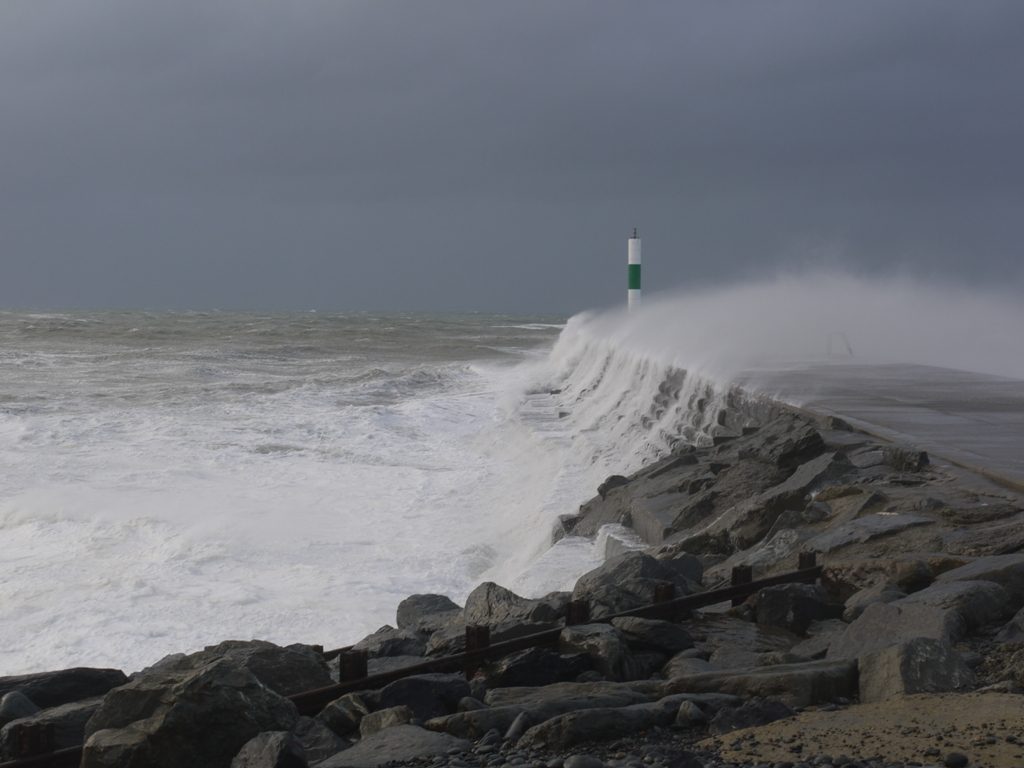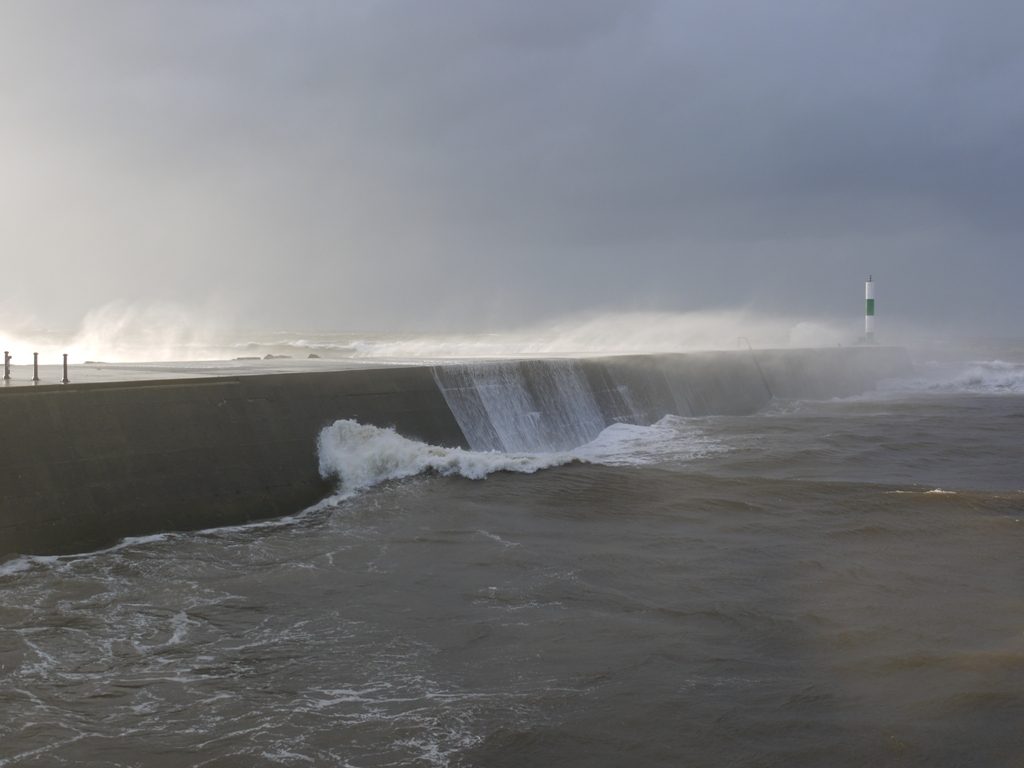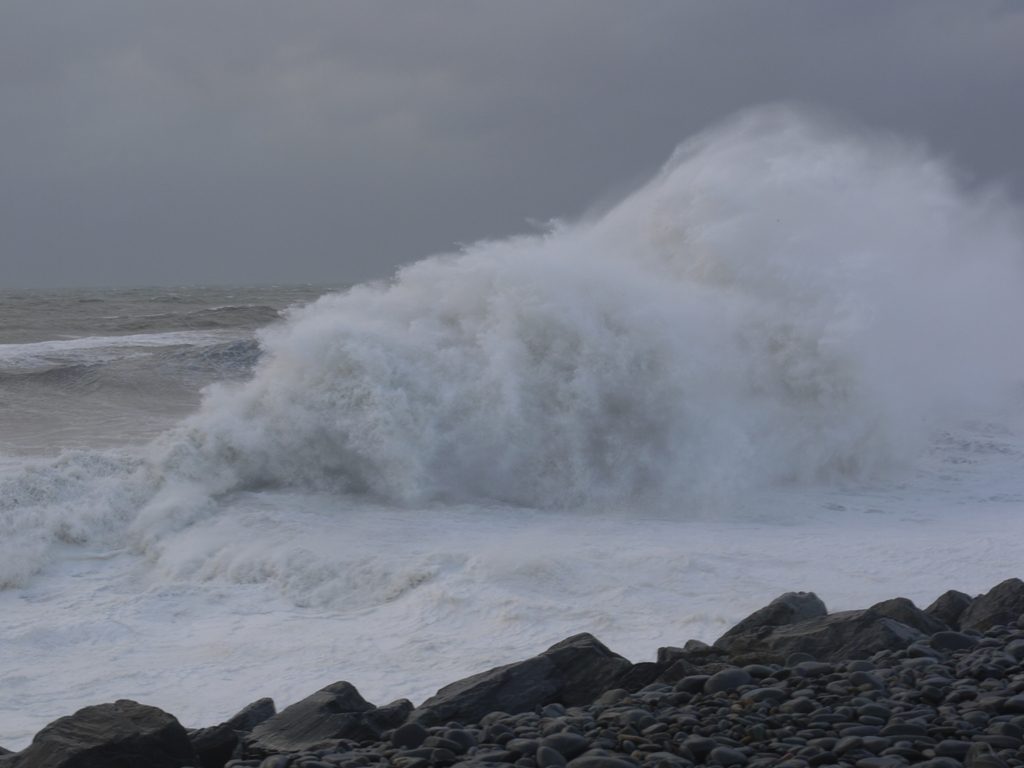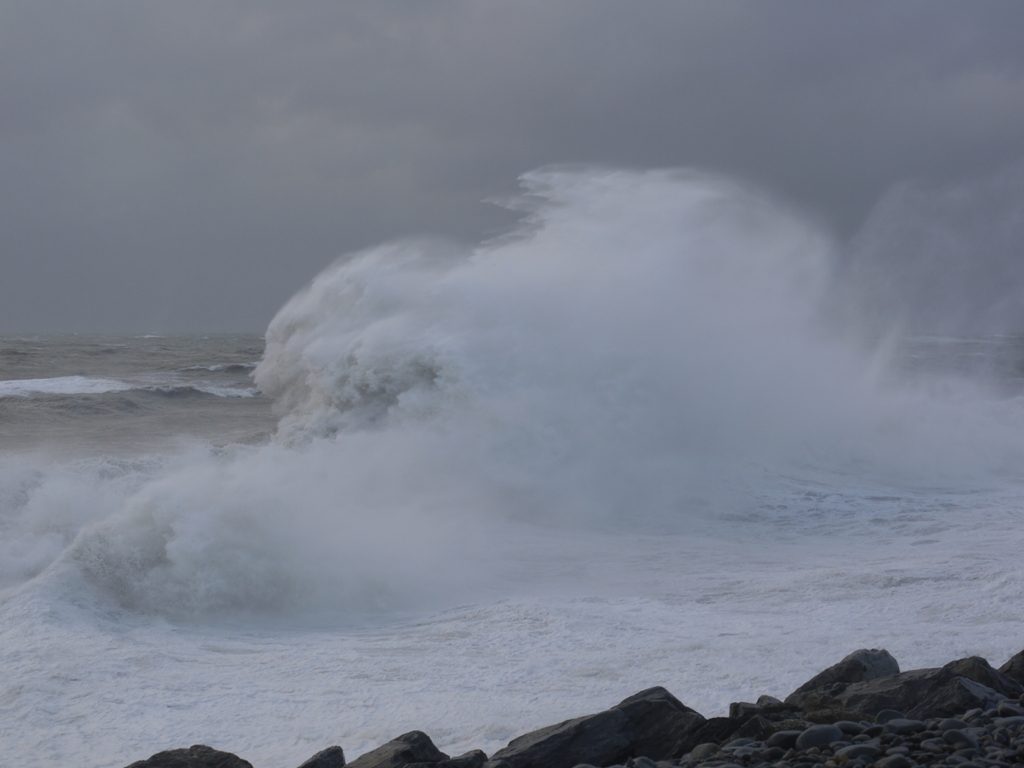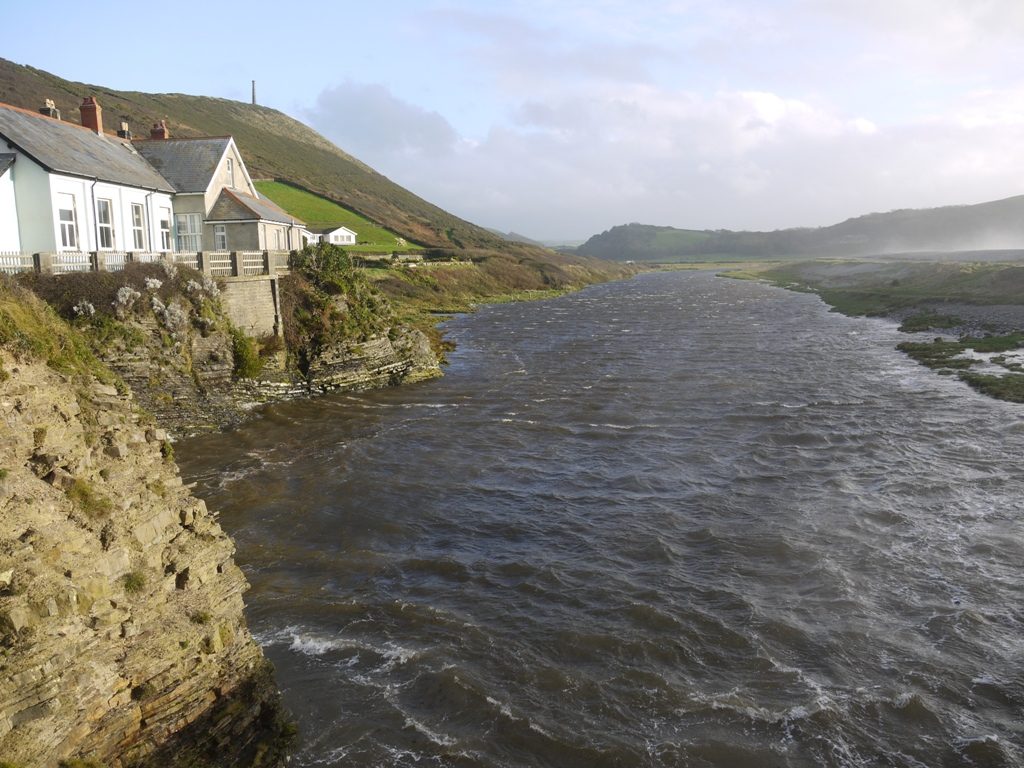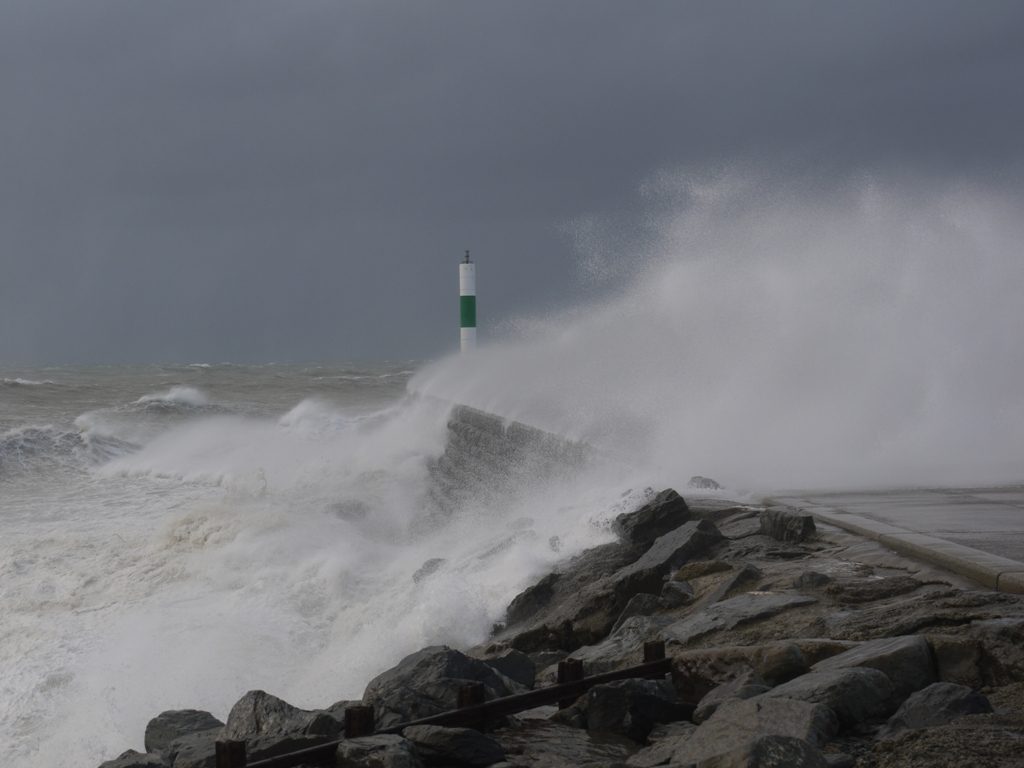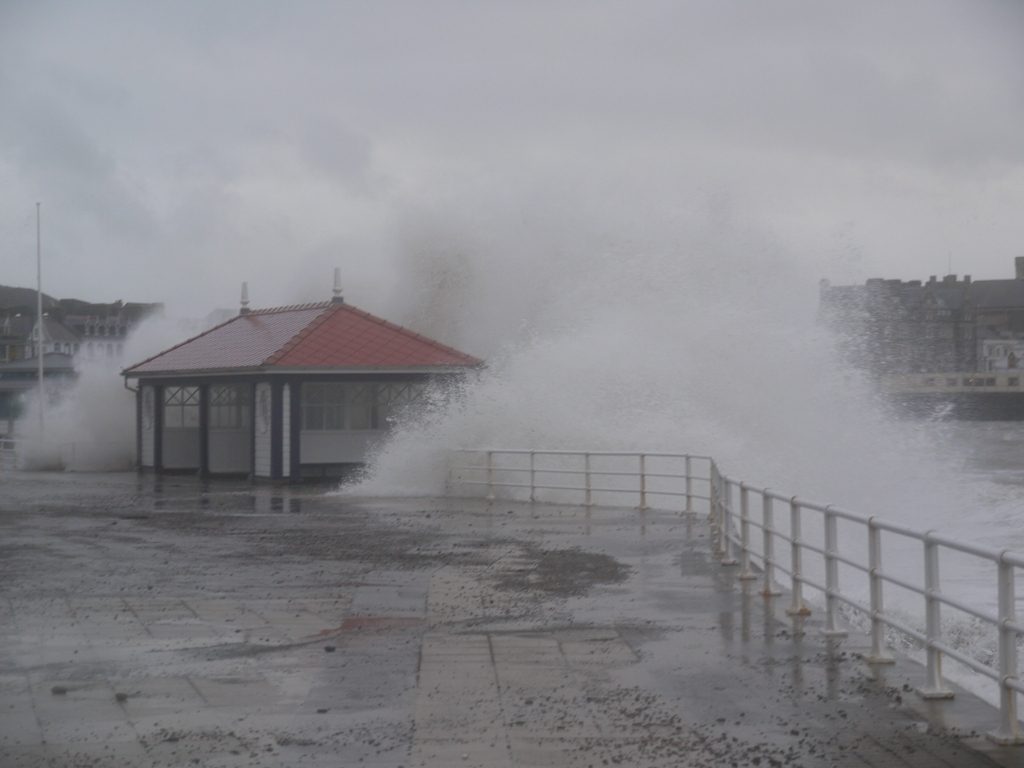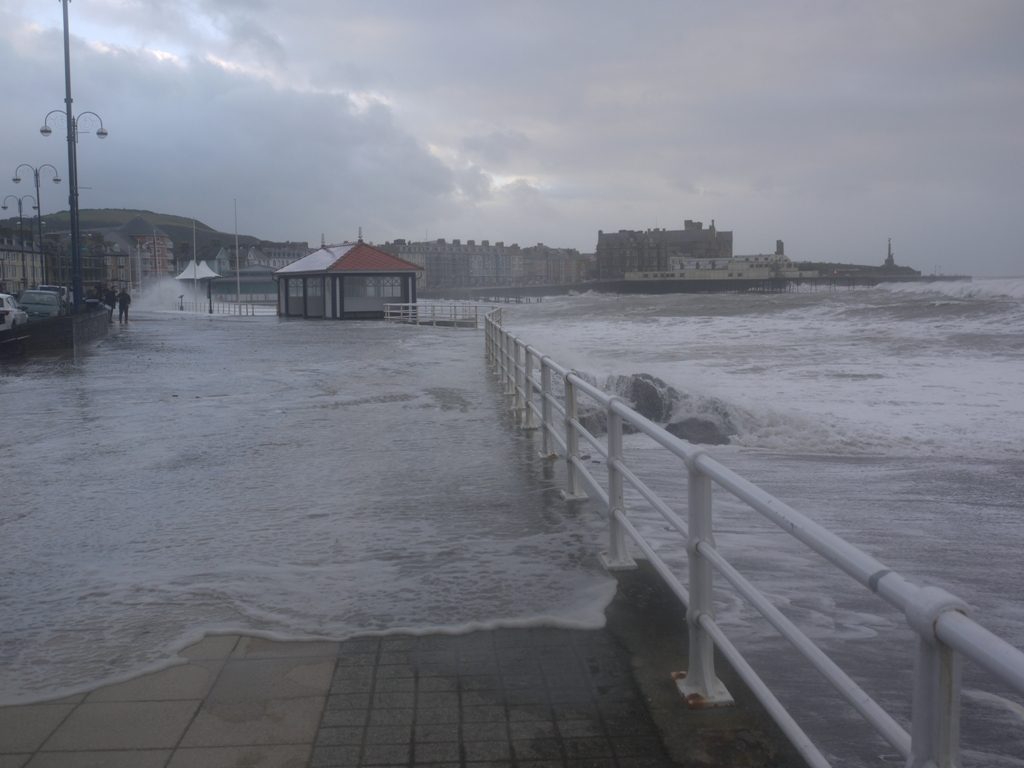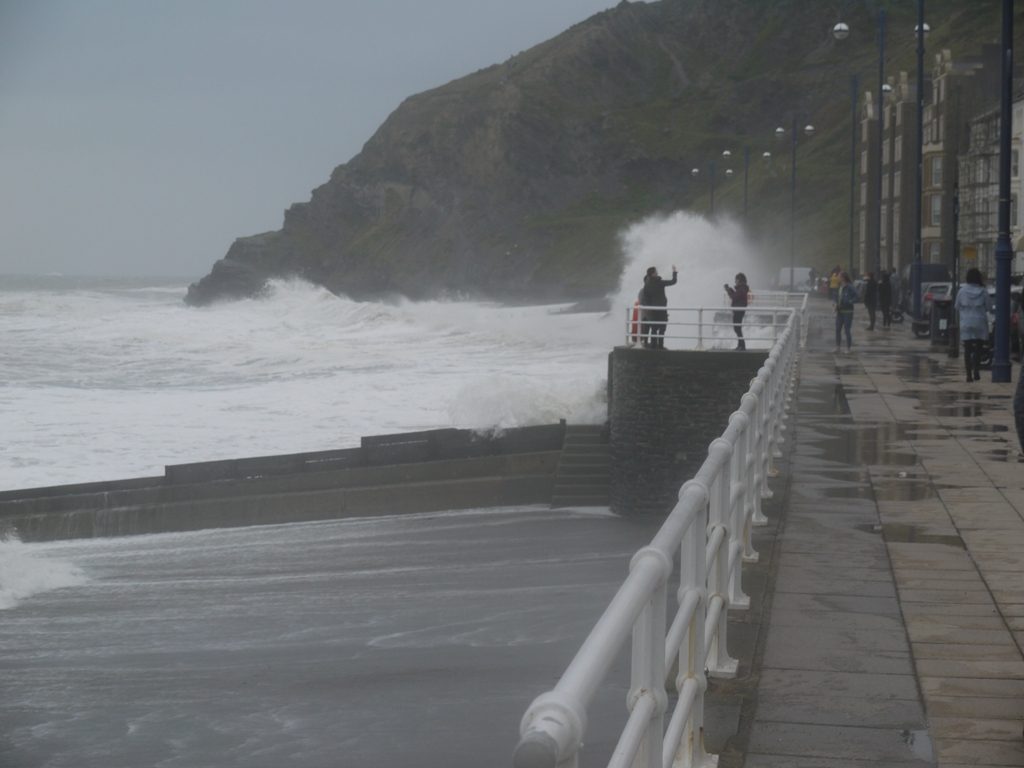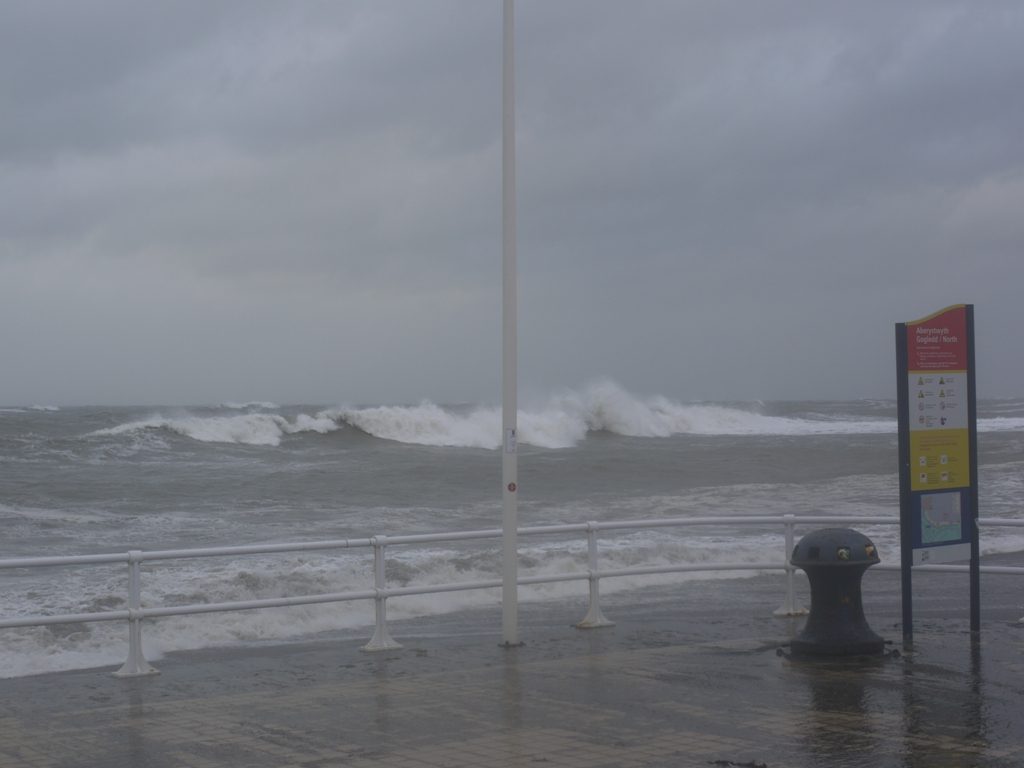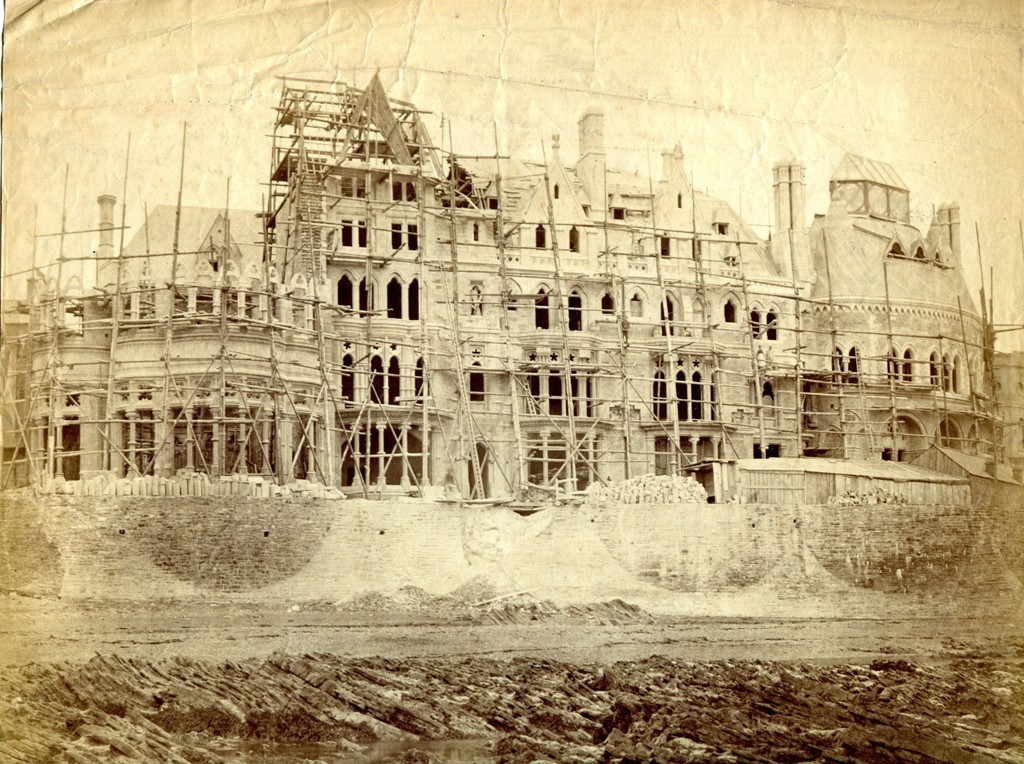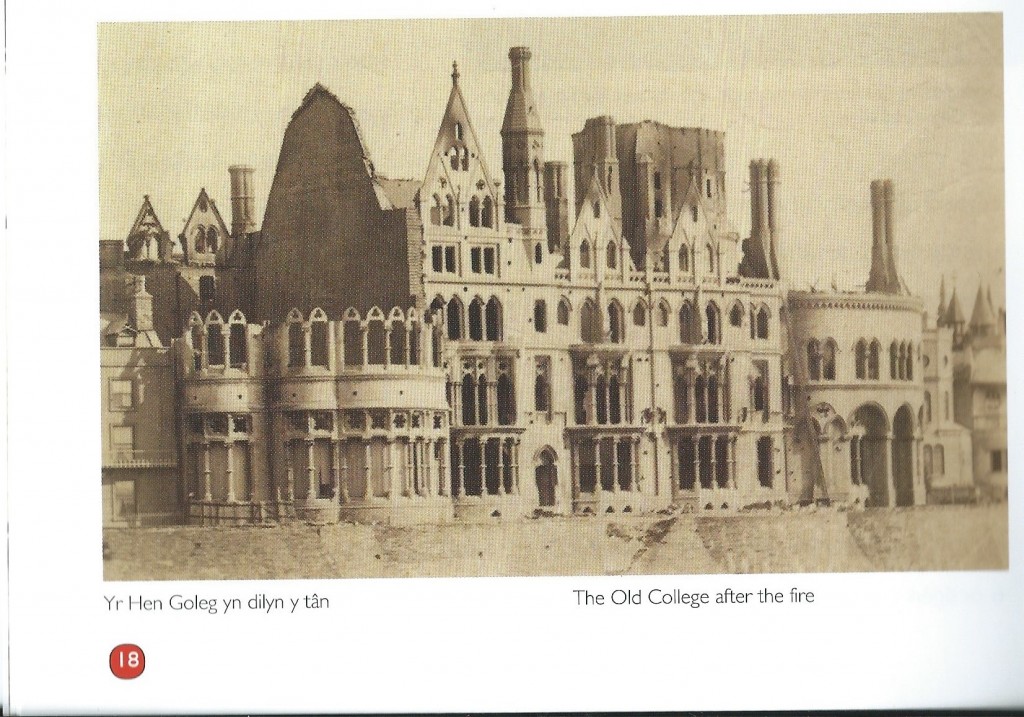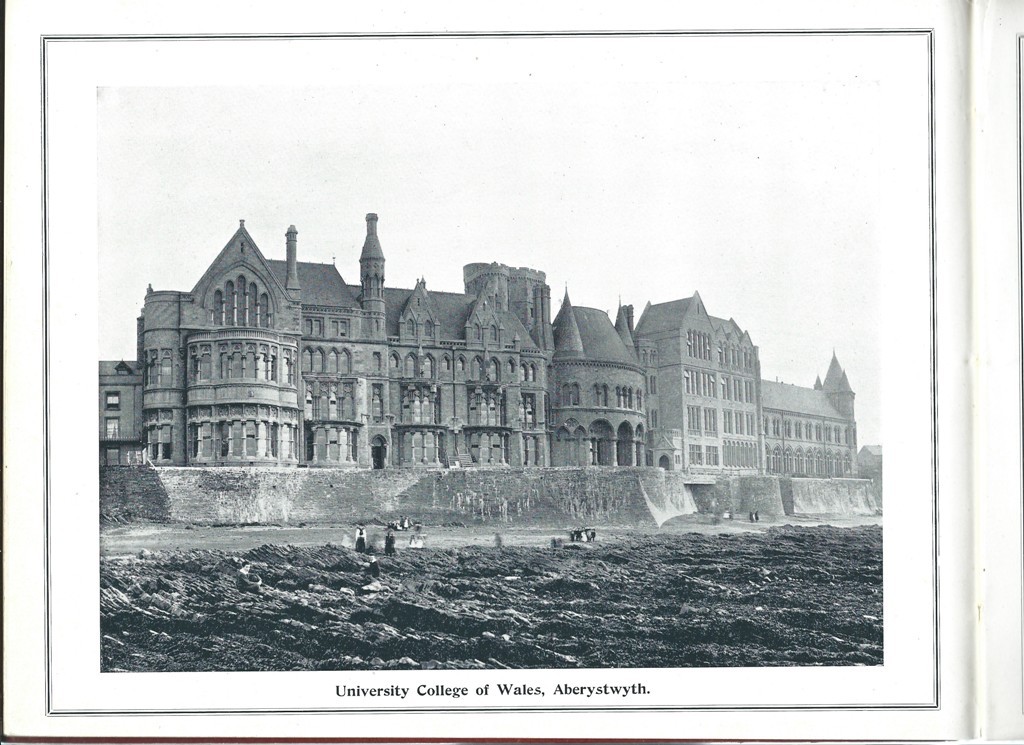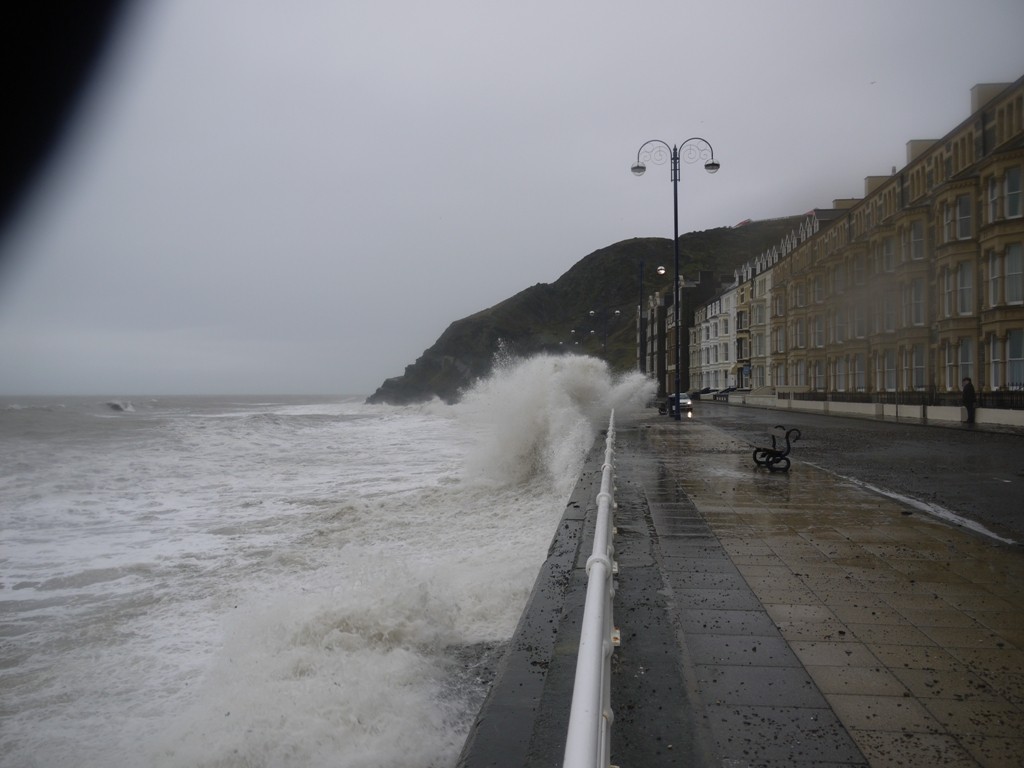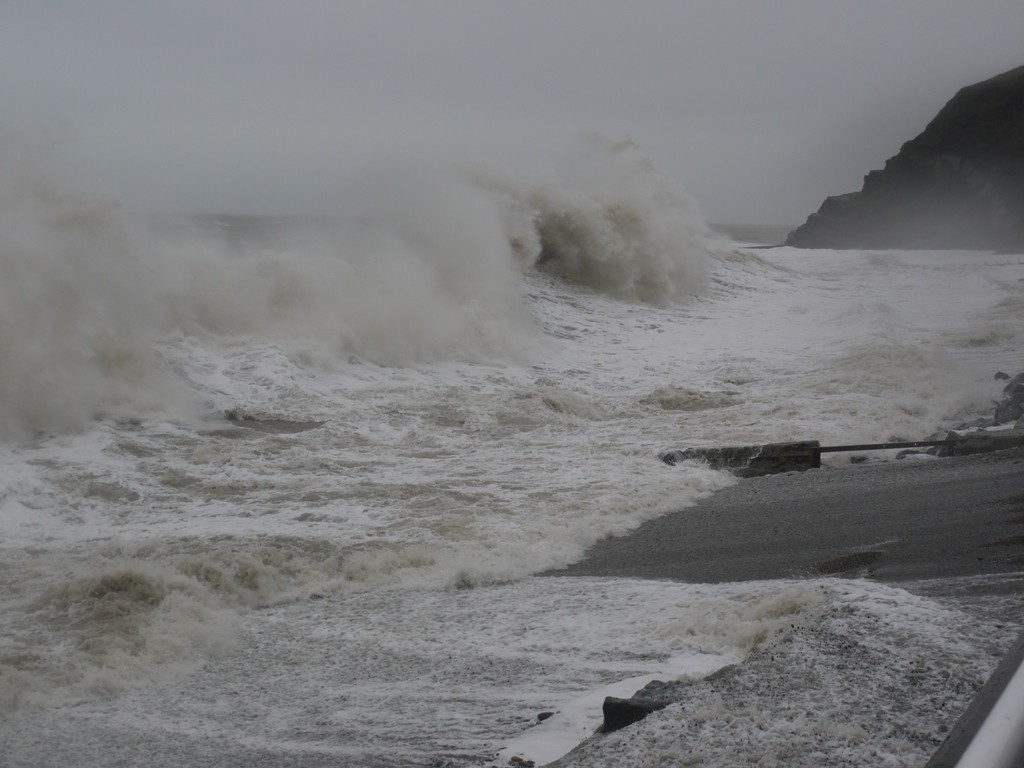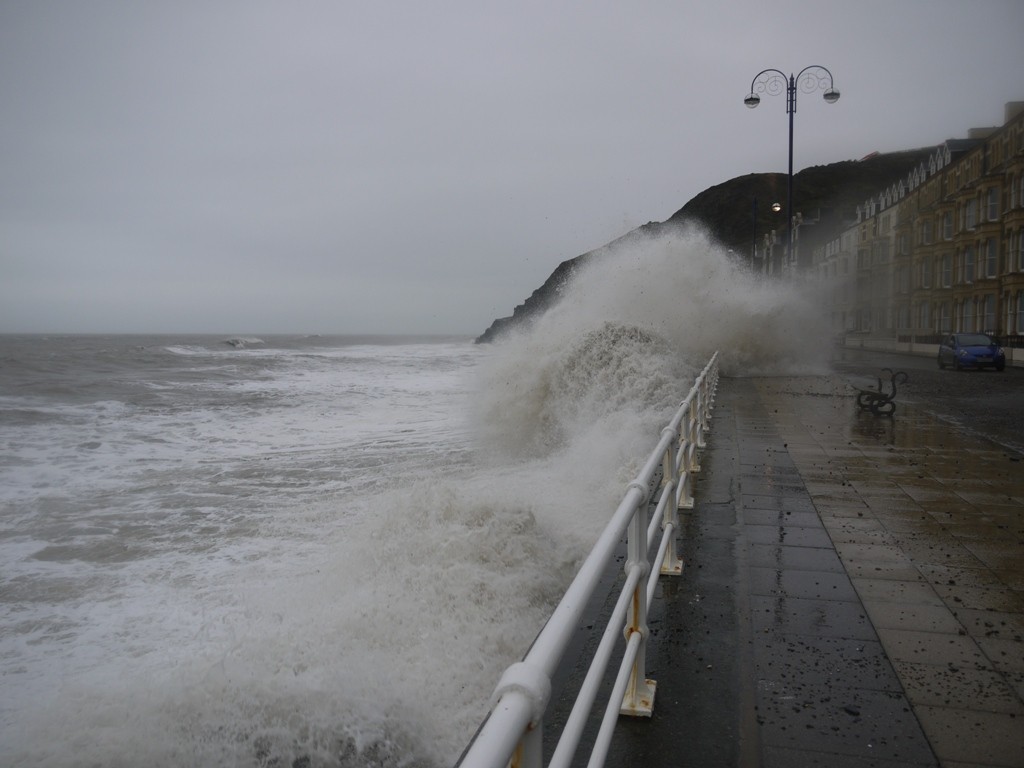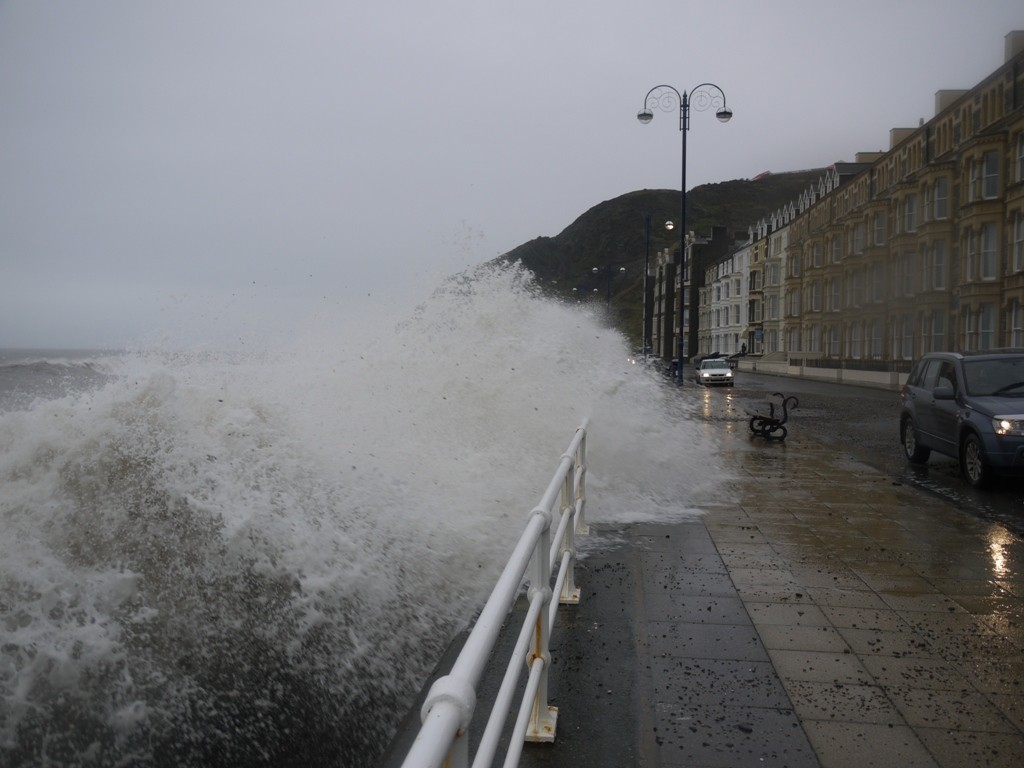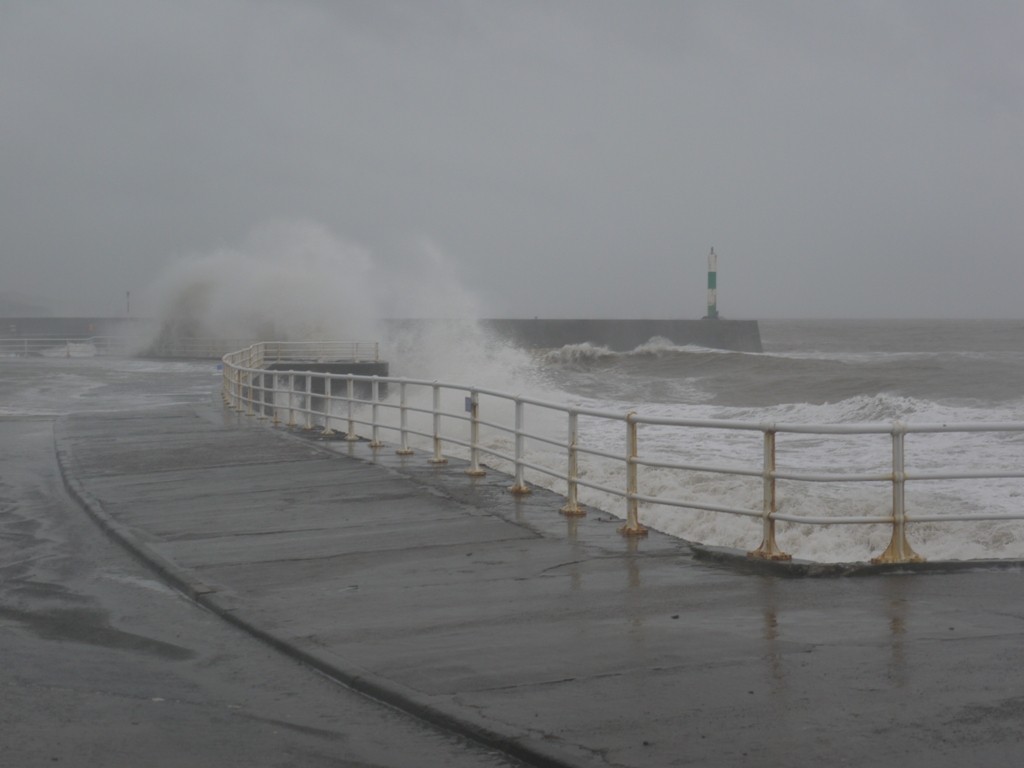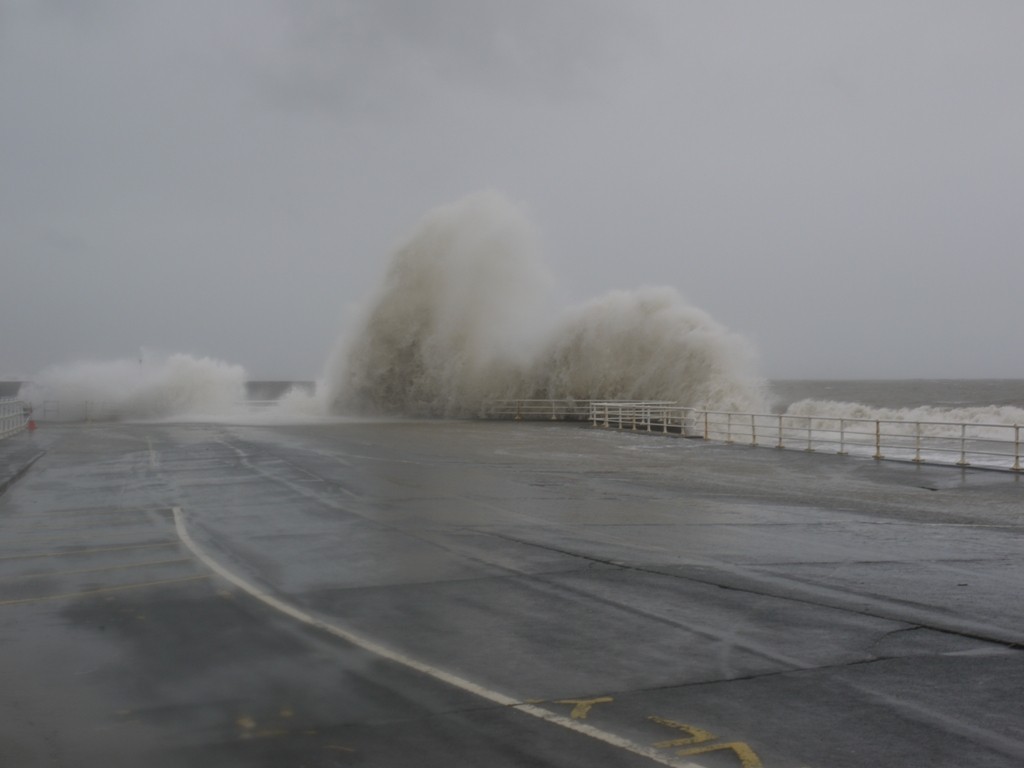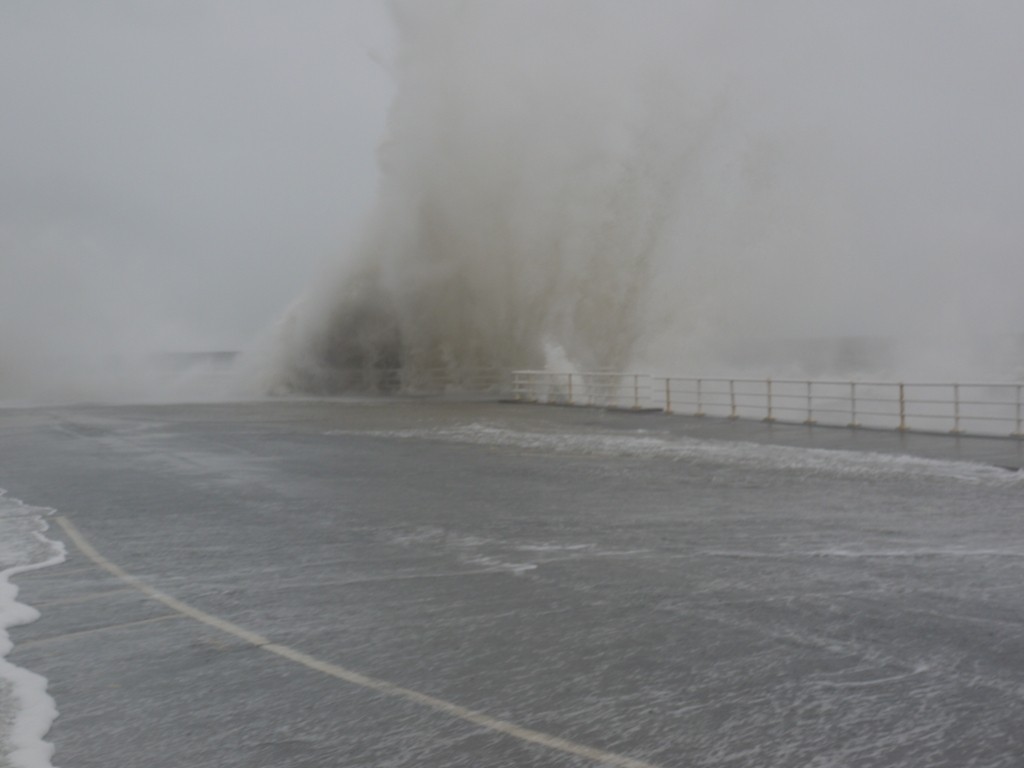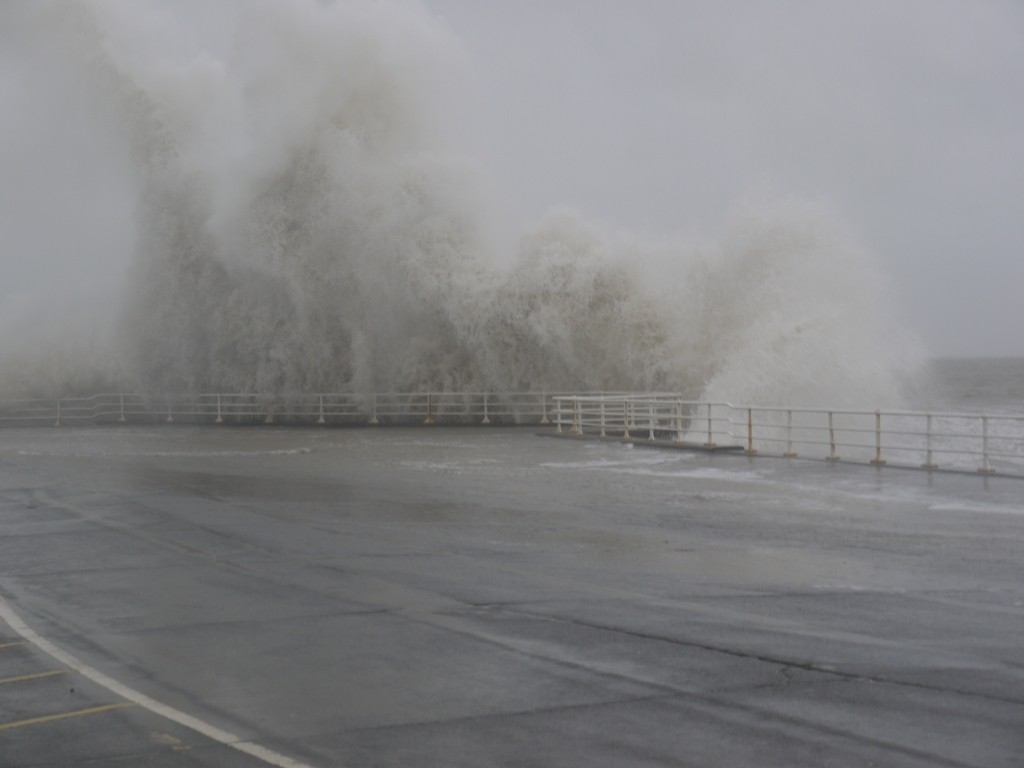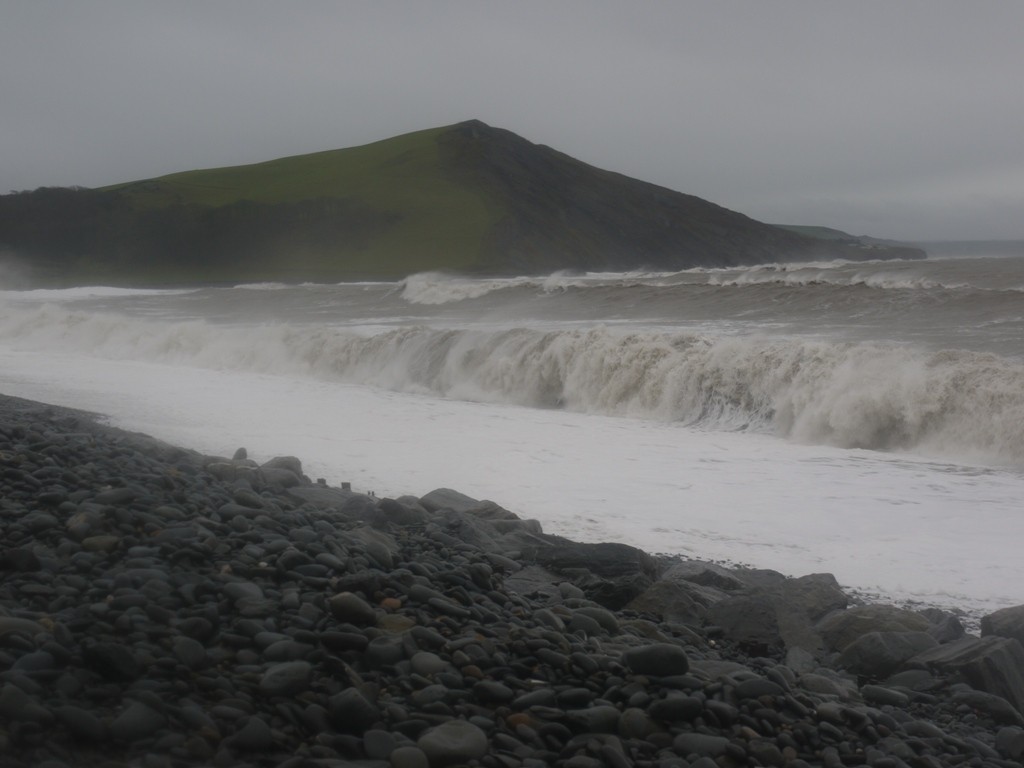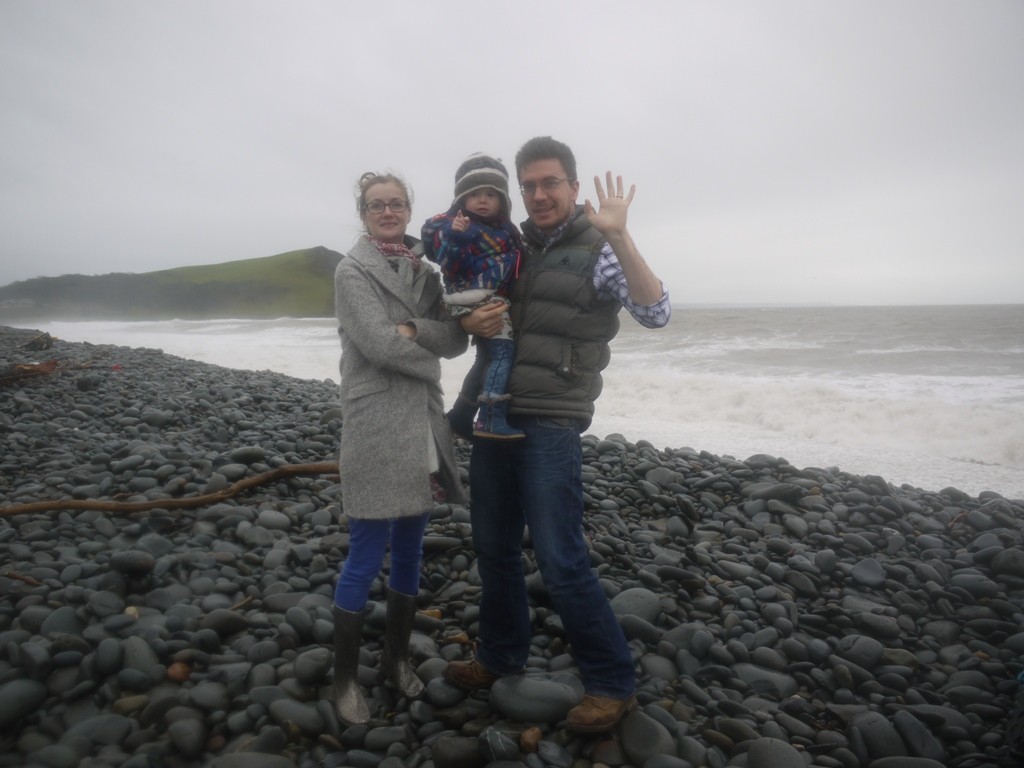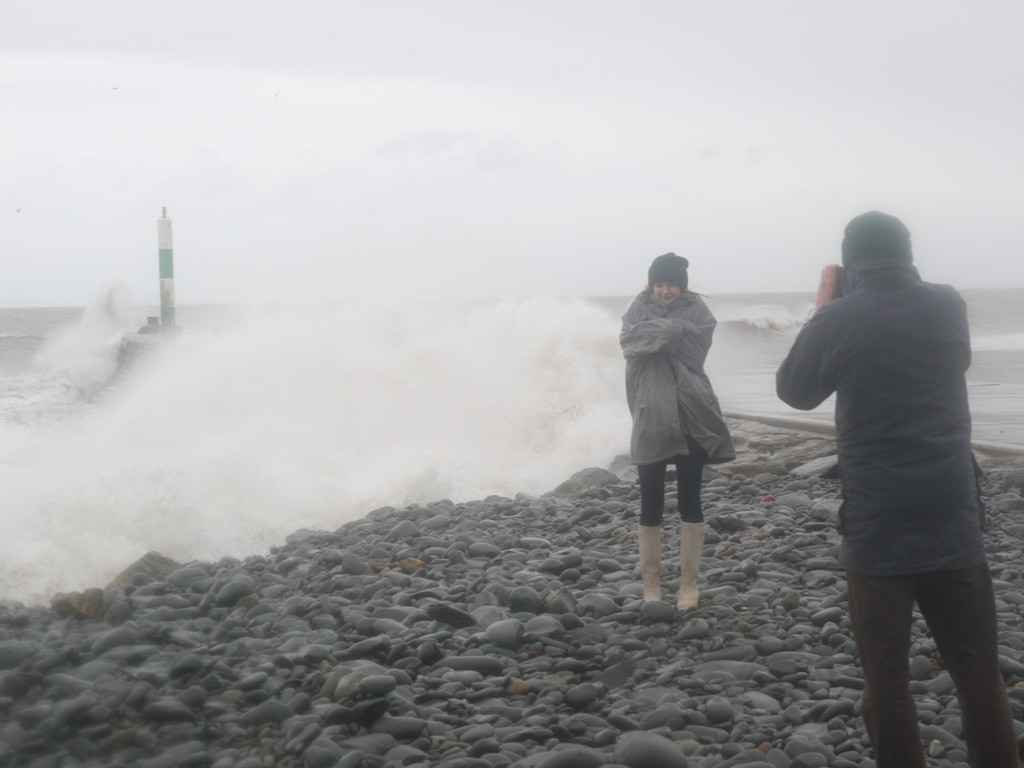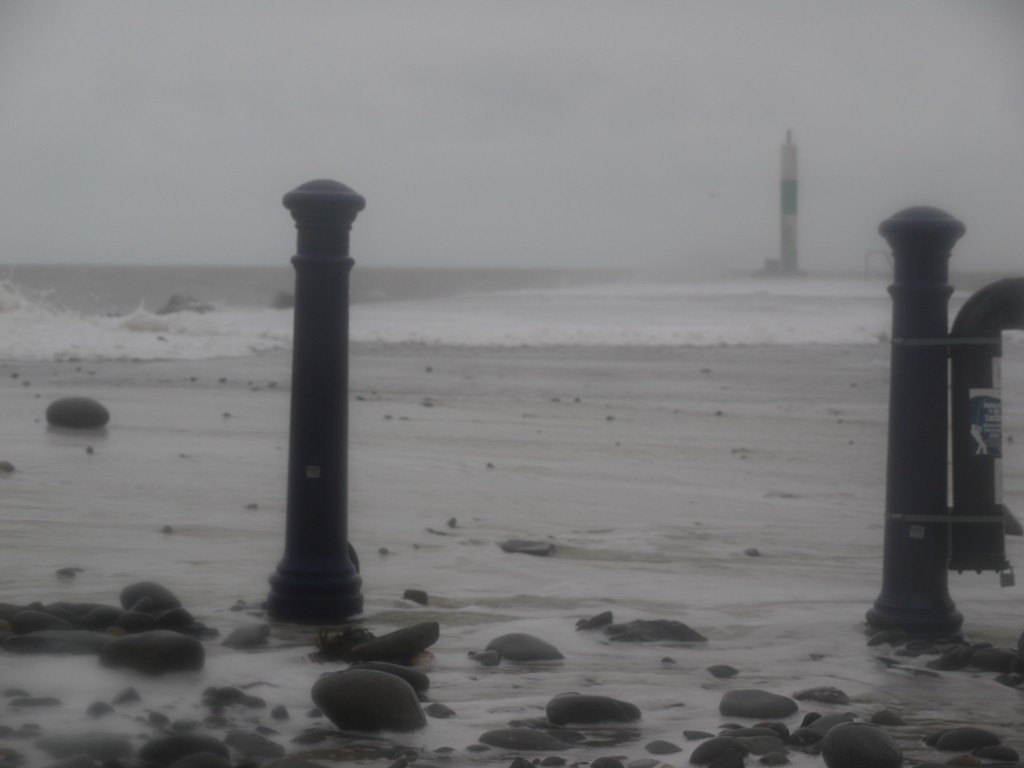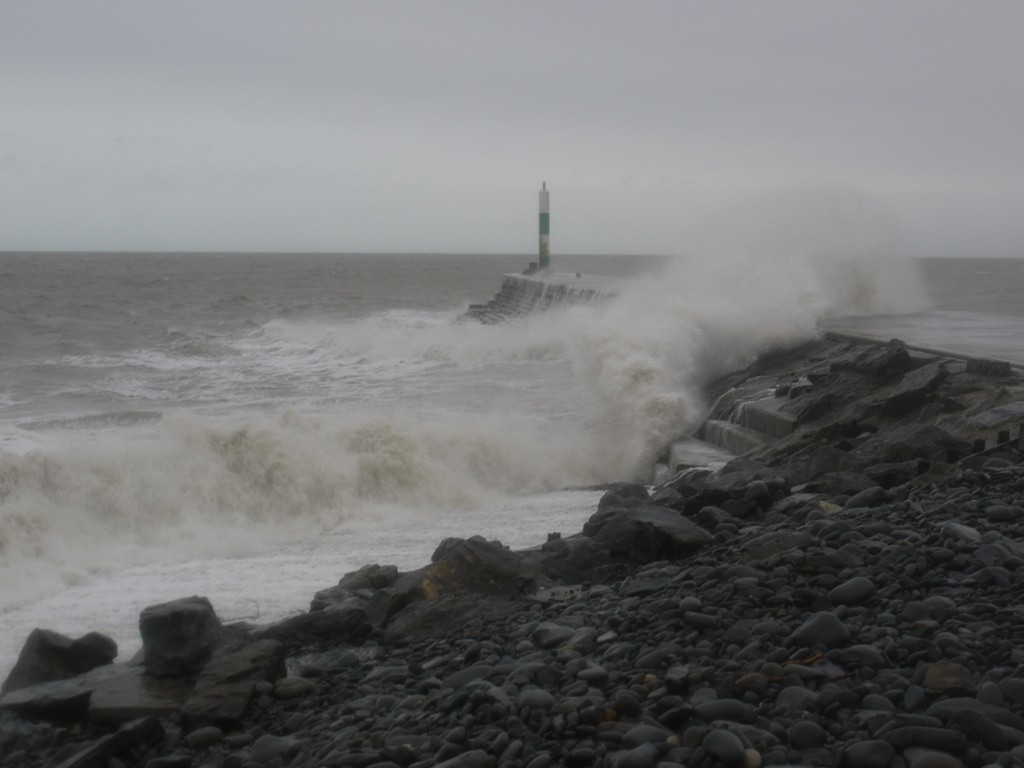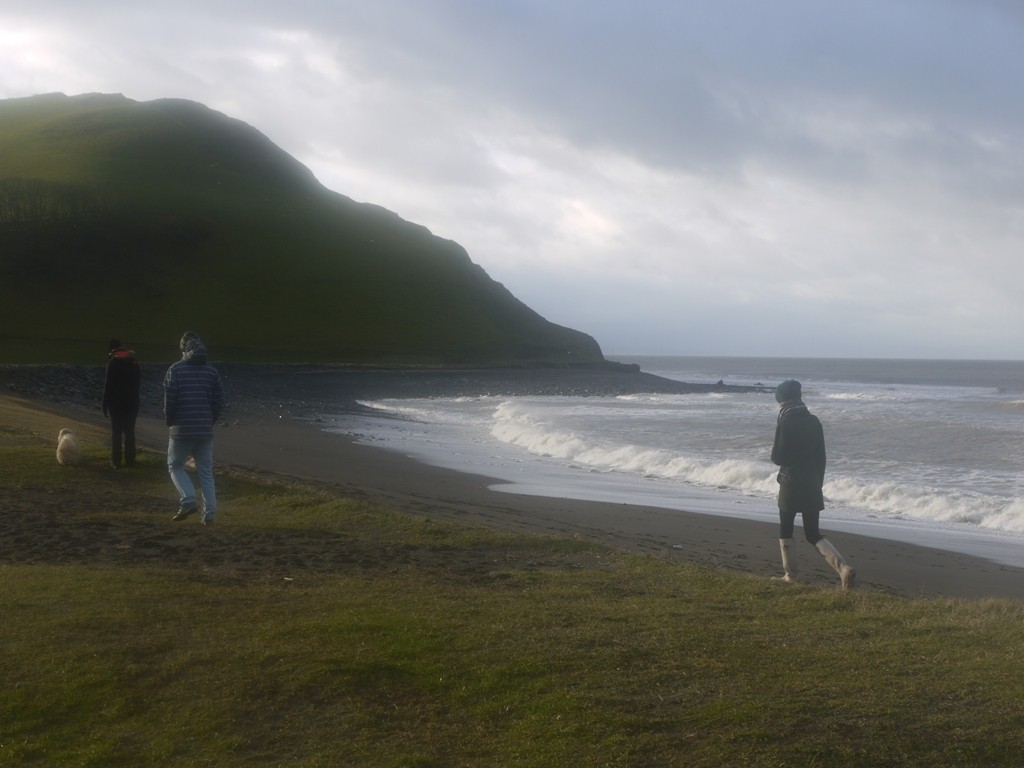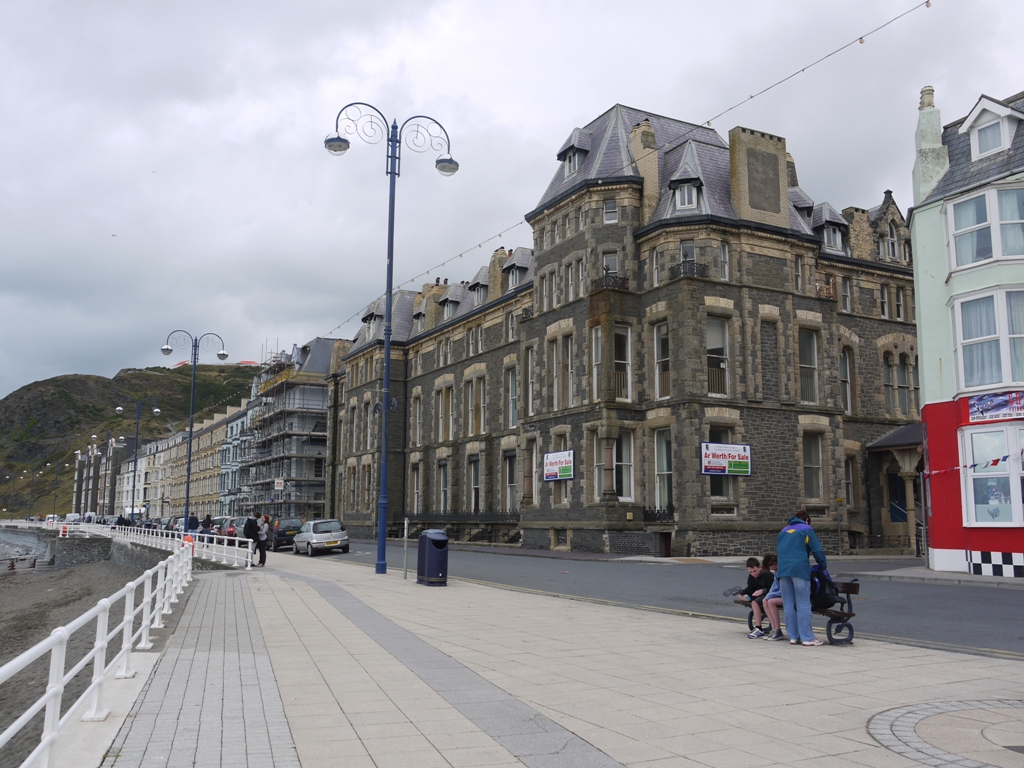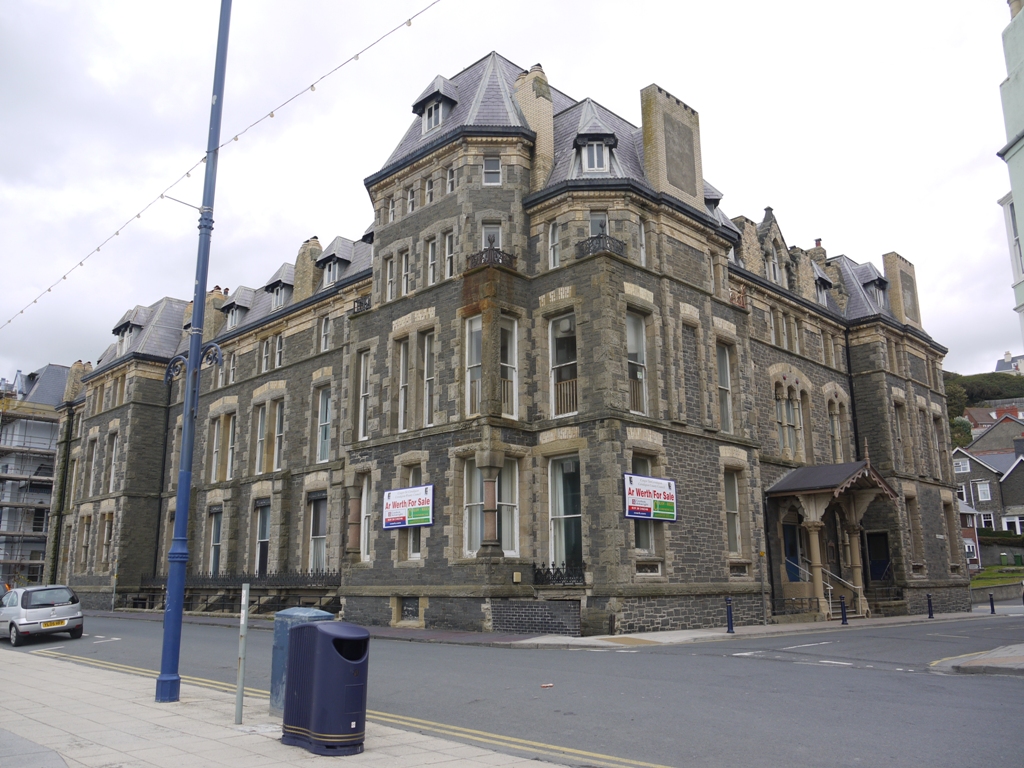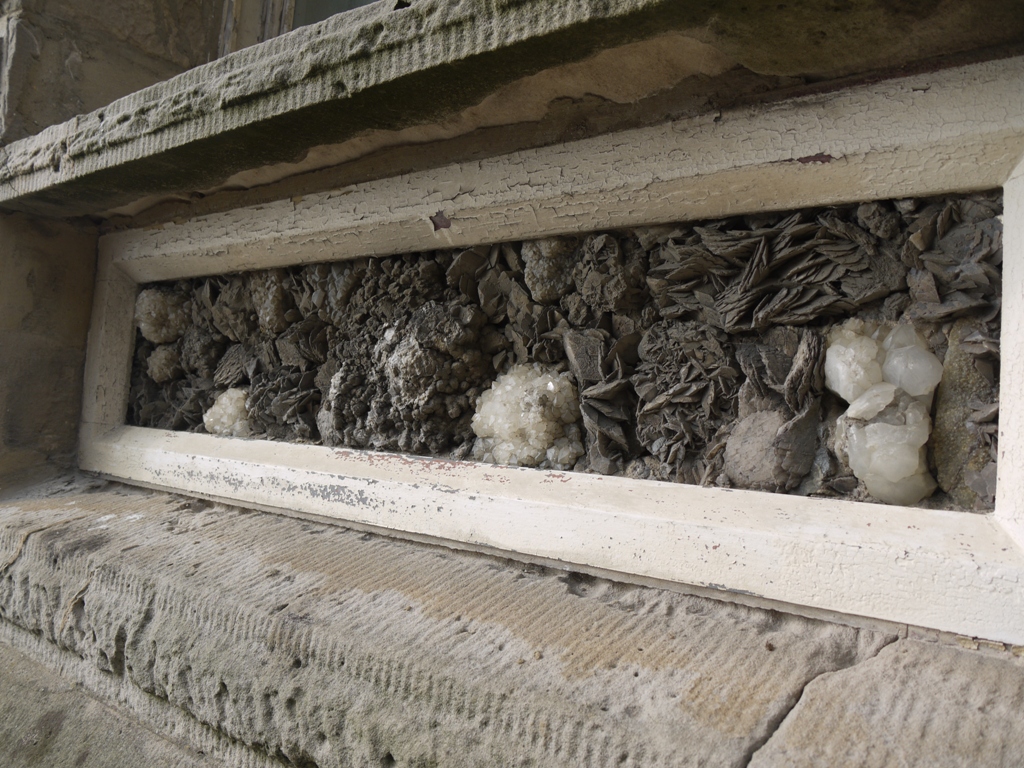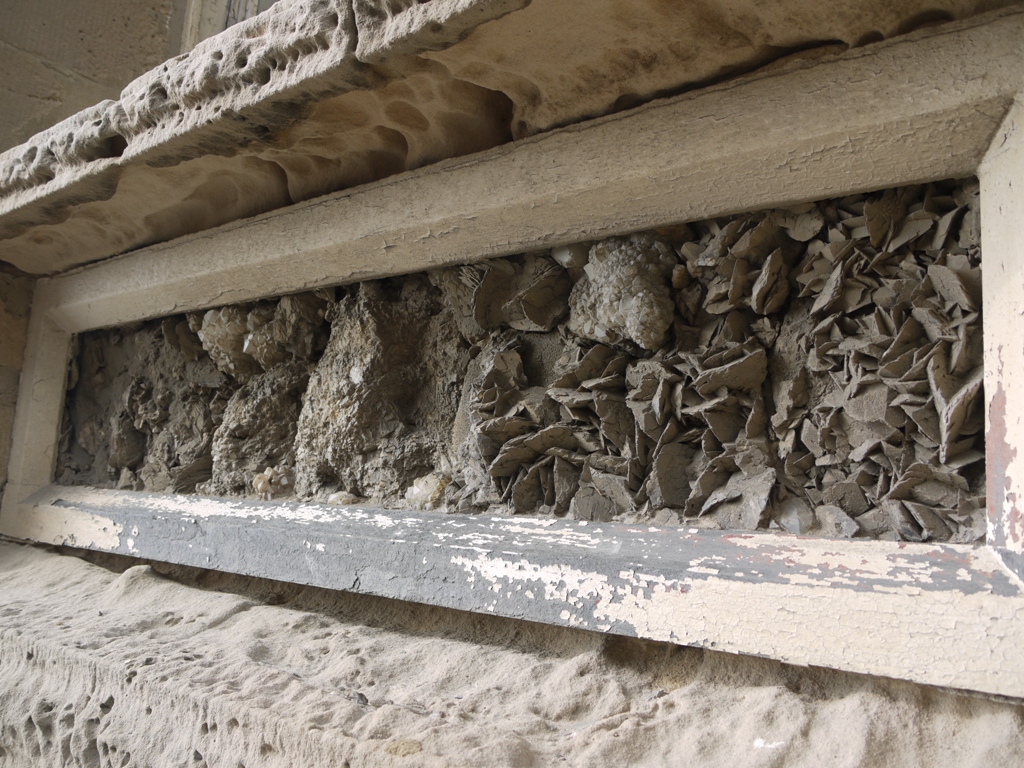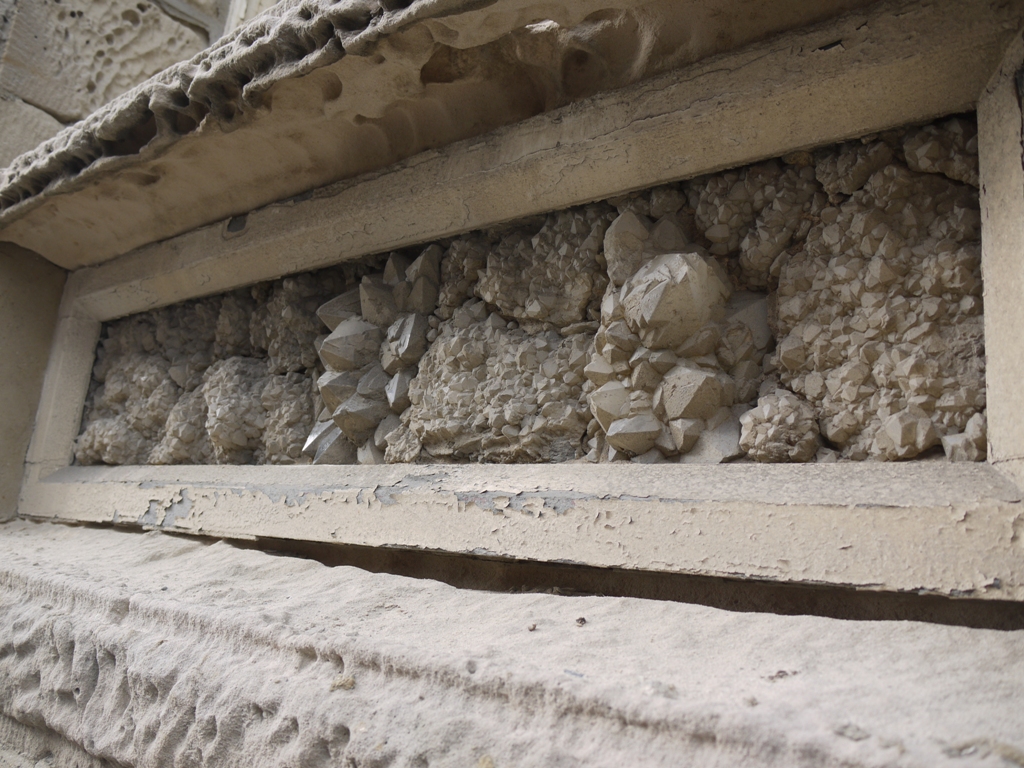by The Curious Scribbler,
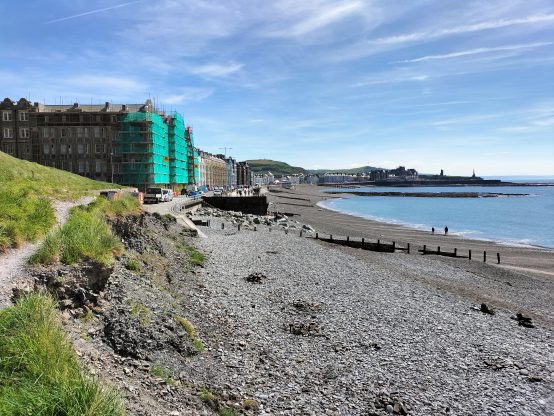
Blue sky, blue sea and green Alexandra hall encased in scaffolding.
Today’s brilliant May sunshine is so welcome after the humid mist of the last few days and the months of rain which preceded it. Dare we hope that we are to be rewarded with a lovely summer? My excursion along the Prom took me to the foot of Constitution HIll, where a small path zig zags up towards the bridge over the funicular railway. The winter storms have removed quite a bit of this path above the shore and a new footway is beginning to be eroded on the slope above the missing bits. Just now though, it passes a sea of pale yellow. The dominant plant here is the Kidney vetch Anthyllis vulneraria.

Footpath up the hill
Perhaps the grey days have diminished my recall but I don’t remember ever seeing it look so lovely. Later in the season the slope will be bright with pink and white valerian, which I remember well, but just now it is the Kidney Vetch and bright patches of clear white Sea Campion Silene uniflora which catch the attention. I looked both flowers up Arthur Chater’s magnificent Flora of Cardiganshire, and was interested to note that he comments that flowering of Kidney Vetch varies greatly from year to year. Surely this horrid winter must have been just the tonic it required.
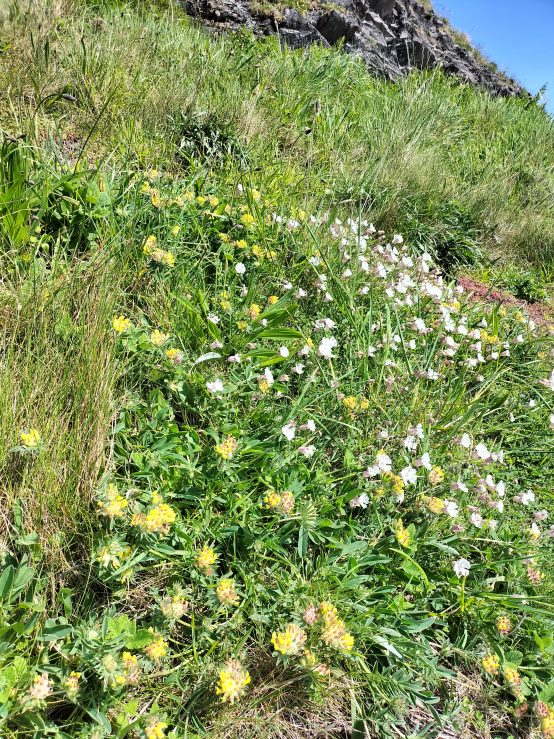
Kidey Vetch and Sea Campion
The distribution map for the occurrence of Kidney Vetch forms an almost uninterrupted black line along the coast of Ceredigon, and indeed he comments that it is almost always found within 100 yards of the sea. What a contrast with its bed fellow the Sea Campion,which ventures far inland, flowering blithely on the toxic spoil heaps of the old lead and silver mines,and on the shingle of the Rheidol and Ystwyth rivers. Plants which flourish where others fail to thrive sometimes attract superstition, and it has some odd alternative names. Dead Man’s Bells or Witches Thimbles. There is a folk tradition that if picked it brings death. As a child I enjoyed popping the bladder-like calyces as if they were tine balloons and I’m still living!
Kidney Vetch by contrast has the folk seal of approval, used by medieval herbalists to relieve swelling and heal wounds, and to treat problems of the stomach and the kidney. One can also eat it apparently, both the young leaves and the small pea like pods, but I hope it will be left for everyone to enjoy.
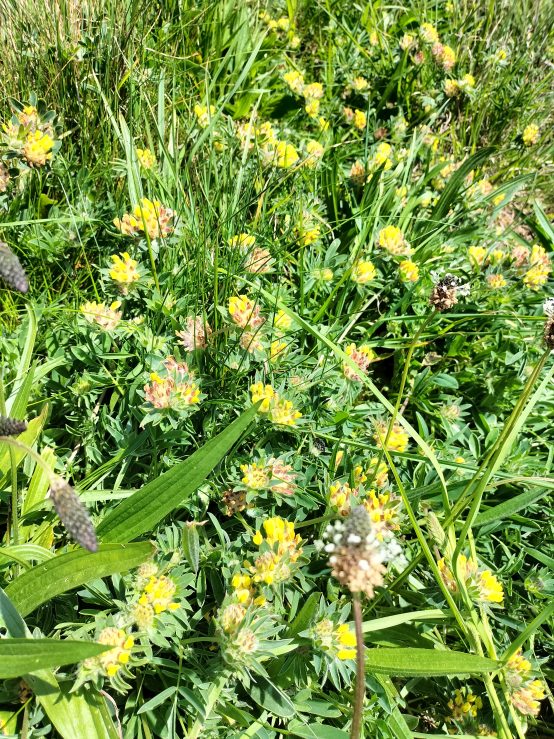
The double-headed flowers of Kidney Vetch

